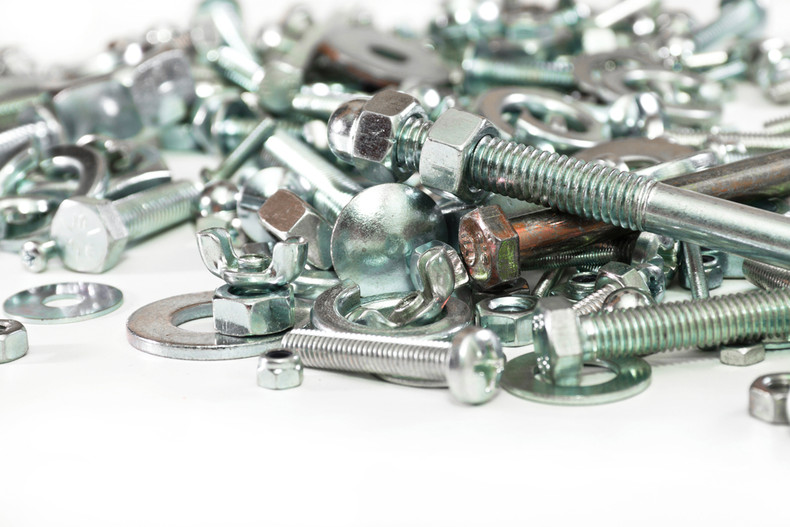Nearly everything around us–to some extent–was constructed with various types of fasteners. Without them, the world as we know it would not function. But, there is often some uncertainty around what the different types of fasteners are, and what they should each be used for.
Continue reading through this guide as we explore the different fastener types that you can find at Industrial Maintenance Supply (imsbolt.com) and how you can select the right one for your project.
What Is A Fastener?
A fastener is a hardware device that is used to attach different objects. Fasteners mechanically attach things together, creating a reliable and durable connection or joint. There are many different types of fasteners out there, and each type of fastener serves its own unique purpose and application.
How To Choose Different Types Of Fasteners?
Choosing the right fastener for a given application doesn’t have to be too complicated. But, you will need to think about the project at hand and what purpose the fastener will play in order to select the best one for your needs.
For instance, constructing a temporary fence will require a different fastener than what’s used in your car engine. But, that’s why there are so many different types of fasteners available that each serves a unique purpose.
While selecting the type of fastener you should use, you’ll first need to consider the type of attachment you’re looking to make with it–permanent, semi-permanent, or temporary. Let’s dive deeper into what this might look like.
Permanent Fastening
If your project requires permanent fastening or a connection that is meant to be long-lasting, it will impact the types of fasteners you use. Fasteners used for permanent fastening are single-use and cannot be removed once they have been used.
Think of things like home or auto manufacturing or consumer electronics. The fasteners used in each of these cases are meant to be permanent and provide enduring connections between the various components.
Semi-Permanent Fastening
Semi-permanent fastening is needed for uses that require good stability and strength in construction but will need to be replaced or disassembled and reassembled at some point. These fasteners are relatively easy to remove and don’t cause damage to the components or fasteners upon removal.
You might need semi-permanent fastening for projects like constructing furniture that you can disassemble if you need to move it, or in machinery that requires regular maintenance and easy access to internal parts.
Temporary Fastening
Temporary fastening requires fasteners that can be removed easily after they’ve been installed, without causing damage to the fastener or either object. Temporary fasteners are meant to create short-term joints that will either be replaced or removed at some point in the near future.
Some uses of temporary fasteners include hanging a picture on a wall or securing a tent to the ground while camping.
Types of Fasteners
Now let’s discuss the different types of fasteners. Here are some of the most common types you’ll come across:
- Screws
- Bolts
- Nuts
- Rivets
- Washers
- Anchors
- Key & Keyways
- Studs
- Nails
- Inserts
- Retaining Rings
- Clevis Pins and Cotter Pins
You may notice some items on this list that you didn’t know were considered fasteners, or maybe you have yet to come across some of them altogether. In either case, let’s break them down in more detail to help you understand the benefit each fastener offers and when they’d be best utilized.
Screws
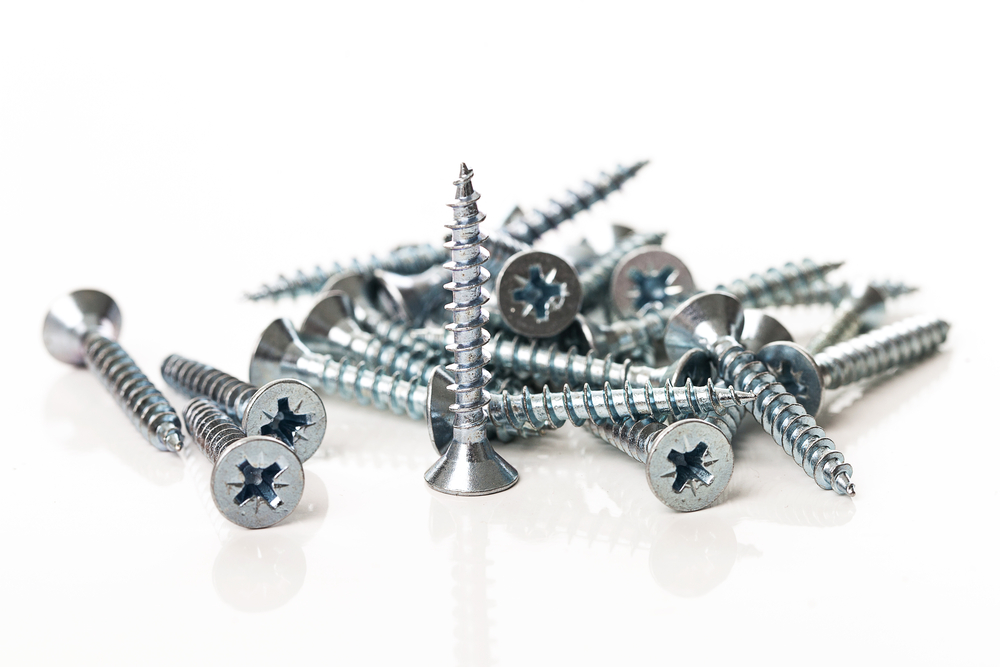
Screws are fasteners that have a pointed end, a head, and an external thread. Screws are very versatile, and provide strong and durable connections between two or more materials. These types of fasteners are used for projects like:
- Woodworking/carpentry
- Construction
- Furniture assembly
- Electronics
- Automotives
Bolts
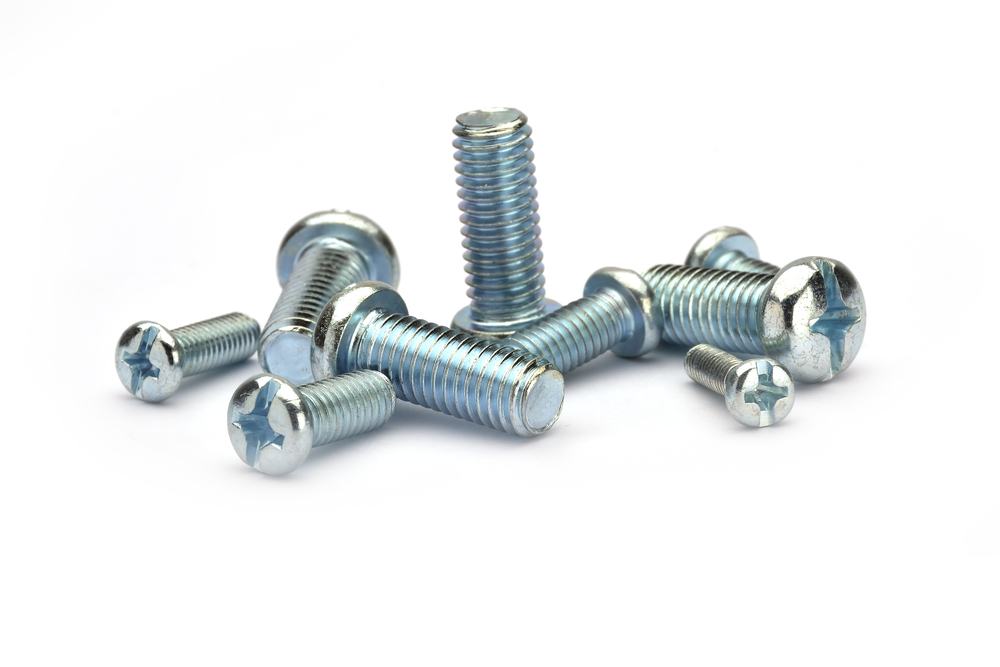
Bolts are fasteners with a head, blunt end, and are externally threaded. To make a secure connection, bolts must be used with a nut. For this reason, they provide strong connections where disassembly may be required. Bolts are commonly used in:
- Construction
- Automotives
- Machinery
- Infrastructure
- Heavy-duty applications
Nuts
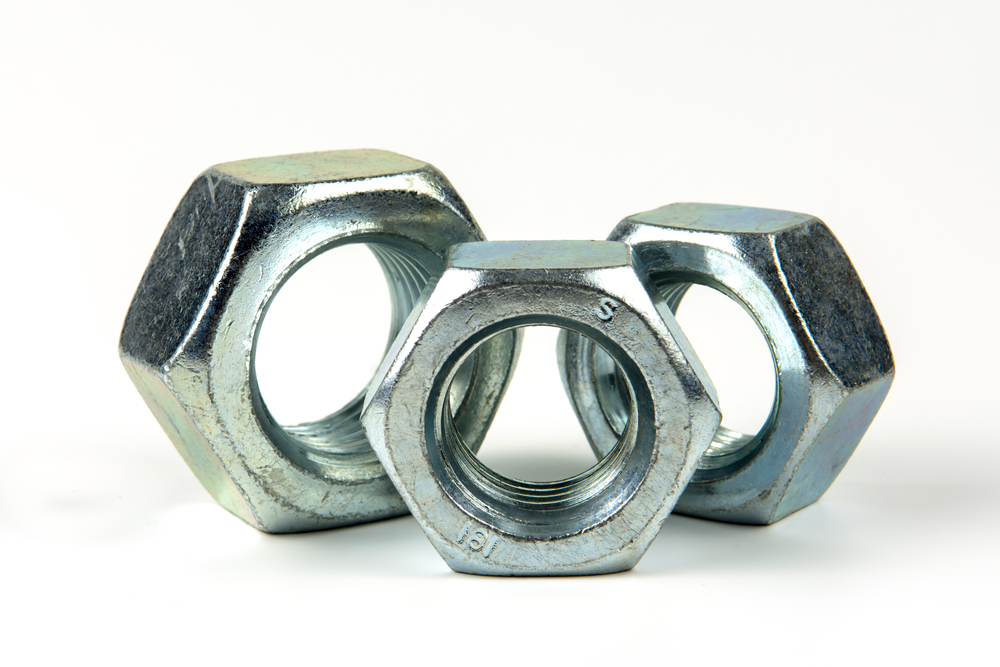
Nuts accompany the use of bolts to provide a secure connection between two or more objects. They are internally threaded to pair seamlessly with the same-sized bolts. Like bolts, nuts are used for the following purposes:
- Construction
- Automotives
- Machinery
- Infrastructure
- Heavy-duty applications
Rivets

Rivets are fasteners that are cylindrical and have a head on one end. Rivets are inserted into pre-drilled holes and then mechanically deformed to create a permanent fastening. Often, they are used when welding is not available or suitable. The following are common applications of rivets:
- Aerospace
- Automotives
- Construction
- Sheet metal fabrication
- Furniture
Washers

Washers are flat and thin discs with a hole in the center. Washers get placed between another fastener and the object being secured to help distribute the load of the connection, improve stability, and prevent the surface of the object from getting damaged. Washers are used in:
- Construction
- Machinery
- Automotives
- Plumbing
- Electrical installations
Anchors

Anchors are fasteners that provide stability and support in the connection of two materials like concrete or masonry. Anchors are often used alongside screws to install shelves or secure things to walls. With this in mind, they are mainly used in projects like:
- Home Improvement
- Construction
- Wall mounting
- Infrastructure
Key & Keyways

Keys and keyways are used to provide a secure and non-slip connection for rotating machinery. They are used for:
- Mechanical engineering
- Automotives
- Industrial equipment
- Machinery
Studs
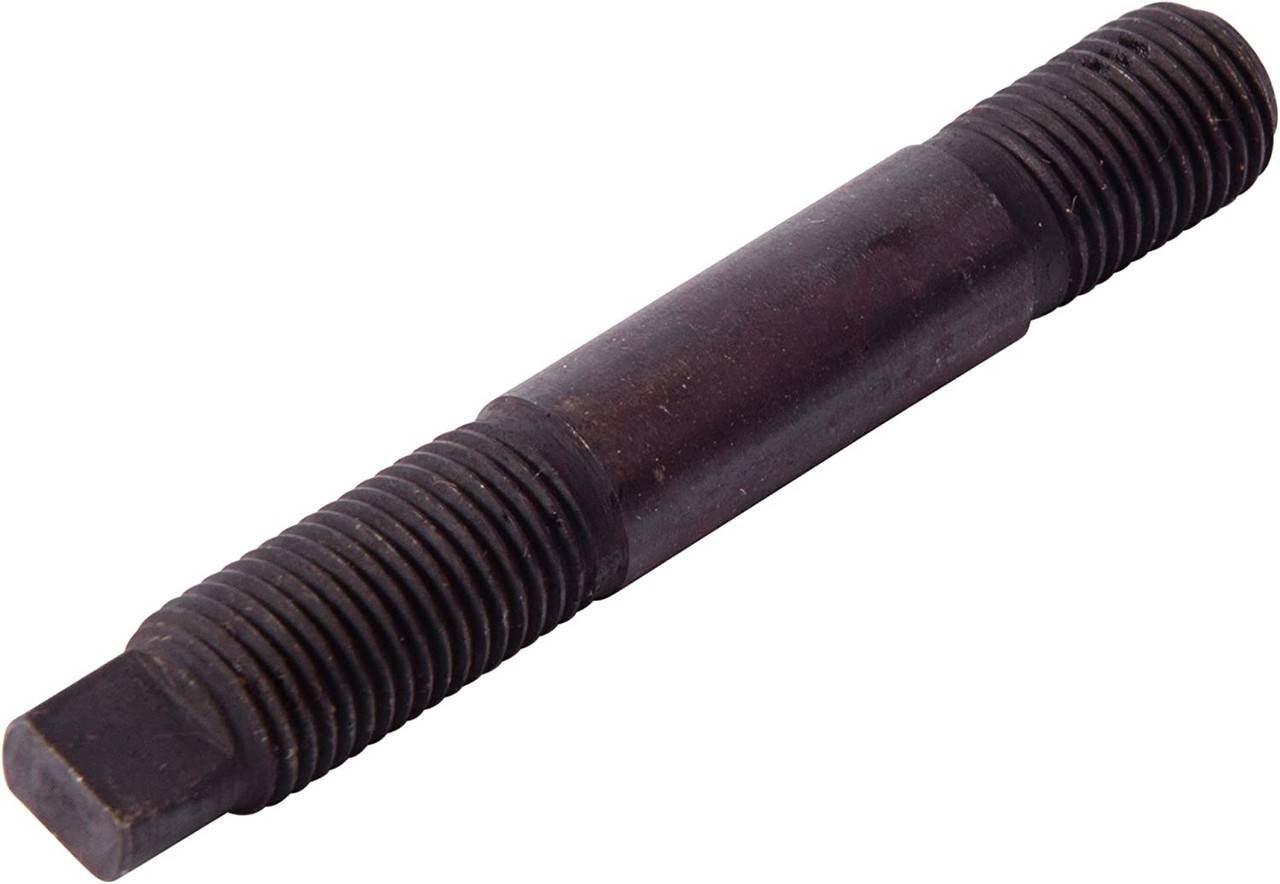
Studs have a threaded end on both sides of the fastener. Unlike bolts, they can provide a secure, threaded connection without a nut. Studs are used in:
- Automotives
- Construction
- Machinery
Nails
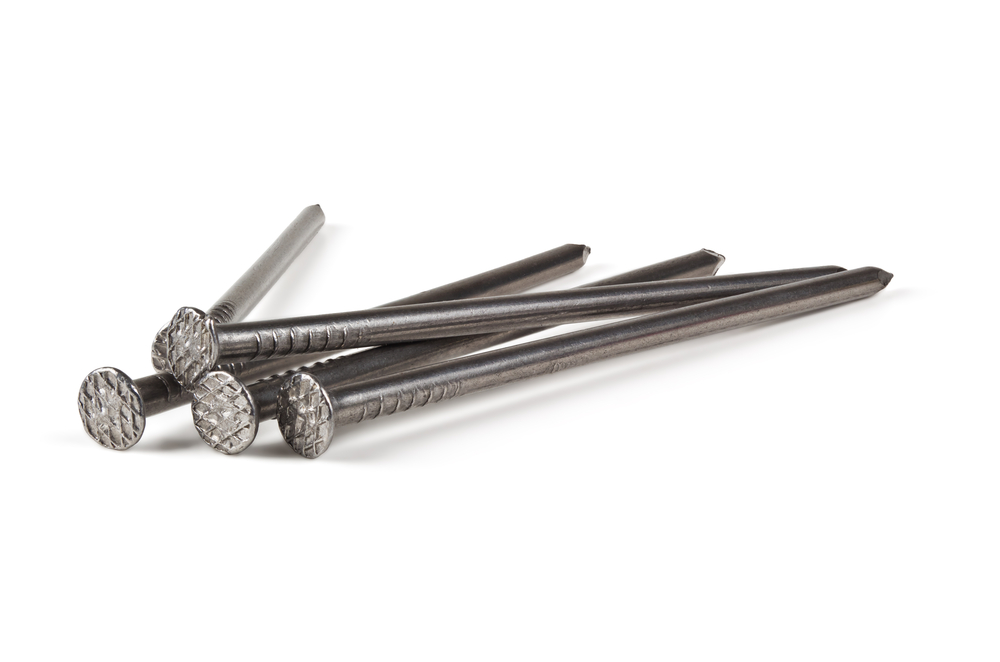
Nails are common fasteners with a flat head, pointed end, and no threads. They are driven into materials with a nail gun or hammer. You use nails for:
- Woodworking/carpentry
- General construction
- Framing
Inserts

Inserts are threaded components that are inserted into materials like wood, plastic, or metal to create a strong and reliable connection with threaded fasteners. Inserts can be used for:
- Furniture assembly
- Cabinetry
- Aerospace
- Automotives
Retaining Rings

Retaining rings are circular fasteners used in shafts or bores that hold bearings, gears, and other components in position. They are commonly used in:
- Machinery
- Automotives
- Industrial equipment
- Appliances
Clevis Pins
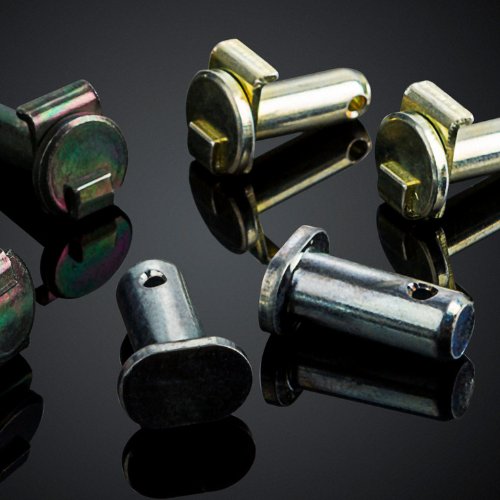
Cotter Pins

Clevis pins and cotter pins are fasteners that work together to connect components that require rotation. Clevis pins have a cross-hole built into the shaft, and cotter pins get inserted into the cross-hole to stay secure. These fasteners are used for:
- Machinery
- Automotives
- Farm equipment
Conclusion
Knowing the different types of fasteners that are out there can help you select the right one for your next project. Within each of these fastener types, there are additional types that are even more specialized for certain projects. But, understanding the main differences between each of these will allow you to see the advantages that they each provide and why they are better suited to certain use cases.

